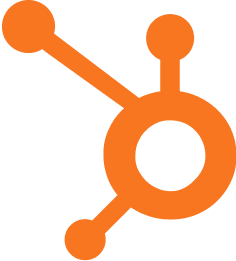Business Analytics: Driving Data-Driven Decisions

Published on: October 01, 2024
In today's data-driven world, Business Analytics has become an essential tool for organizations seeking to gain a competitive edge. This powerful discipline combines data analysis, statistical methods, and advanced technologies to extract valuable insights from raw information, enabling companies to make informed decisions and optimize their operations.
What is Business Analytics? 📊
Business Analytics refers to the systematic exploration of an organization's data, with an emphasis on statistical analysis and predictive modeling. It involves the use of various tools and techniques to transform raw data into actionable insights that drive strategic decision-making and improve overall business performance.
Key Components of Business Analytics 🔑
Business Analytics encompasses several key components:
- Descriptive Analytics: Analyzing historical data to understand past performance
- Predictive Analytics: Using statistical models and machine learning to forecast future trends
- Prescriptive Analytics: Recommending actions based on analytical findings
- Diagnostic Analytics: Identifying the root causes of specific outcomes
Importance in Sales, Marketing, and Revenue Operations 💼
Business Analytics plays a crucial role in optimizing various aspects of an organization's operations:
Sales Operations
- Forecasting sales trends
- Identifying high-value customers
- Optimizing sales territories and quotas
Marketing Operations
- Analyzing campaign performance
- Segmenting customers for targeted marketing
- Optimizing marketing spend
Revenue Operations
- Identifying revenue leakage
- Forecasting revenue and cash flow
- Optimizing pricing strategies
Practical Applications of Business Analytics 🚀
Here are some real-world examples of how organizations leverage Business Analytics:
- Customer Segmentation: Grouping customers based on behavior and preferences to tailor marketing efforts
- Demand Forecasting: Predicting future demand for products or services to optimize inventory and production
- Churn Prediction: Identifying customers at risk of leaving and implementing retention strategies
- Pricing Optimization: Analyzing market data to determine optimal pricing strategies
- Fraud Detection: Using anomaly detection techniques to identify fraudulent activities
Key Statistics on Business Analytics 📈
| Statistic | Value |
|---|---|
| Global Business Analytics Market Size (2021) | $67.92 billion |
| Projected CAGR (2022-2030) | 9.3% |
| Organizations using Analytics for Decision Making | 97% |
Common Challenges in Implementing Business Analytics 🚧
While the benefits of Business Analytics are clear, organizations often face challenges in implementation:
- Data quality and integration issues
- Lack of skilled personnel
- Resistance to data-driven decision-making
- Ensuring data privacy and security
- Choosing the right tools and technologies
The Future of Business Analytics 🔮
As technology continues to evolve, so does the field of Business Analytics. Some emerging trends include:
- Increased use of Artificial Intelligence and Machine Learning
- Real-time analytics for faster decision-making
- Integration of unstructured data sources (e.g., social media, IoT devices)
- Greater focus on data ethics and responsible AI
In conclusion, Business Analytics has become an indispensable tool for organizations looking to thrive in today's competitive landscape. By harnessing the power of data, companies can make informed decisions, optimize their operations, and drive sustainable growth.
As you consider implementing Business Analytics in your organization, ask yourself:
- What key business questions can we answer with our existing data?
- How can we integrate analytics into our decision-making processes?
- What skills and tools do we need to build a robust analytics capability?
- How can we create a data-driven culture within our organization?
By addressing these questions, you'll be well on your way to leveraging the power of Business Analytics in your Sales and Marketing stack.
















